Top 23 Must-Visit Historical Places & Landmarks in the Philippines | Guide to the Philippines (original) (raw)

As the famous Filipina history buff Carmen Guerrero Nakpil said it, Philippine history can be described as “300 years in a convent and 50 years in Hollywood”. This nation of 7,000+ islands was colonised by the Spaniards for 333 years and by the Americans for almost half a century.
- Find the best history tours in the Philippines
Several landmarks across the country remain standing — with their walls, pillars, and grounds echoing stories of the Philippines’ tragic and triumphant past.
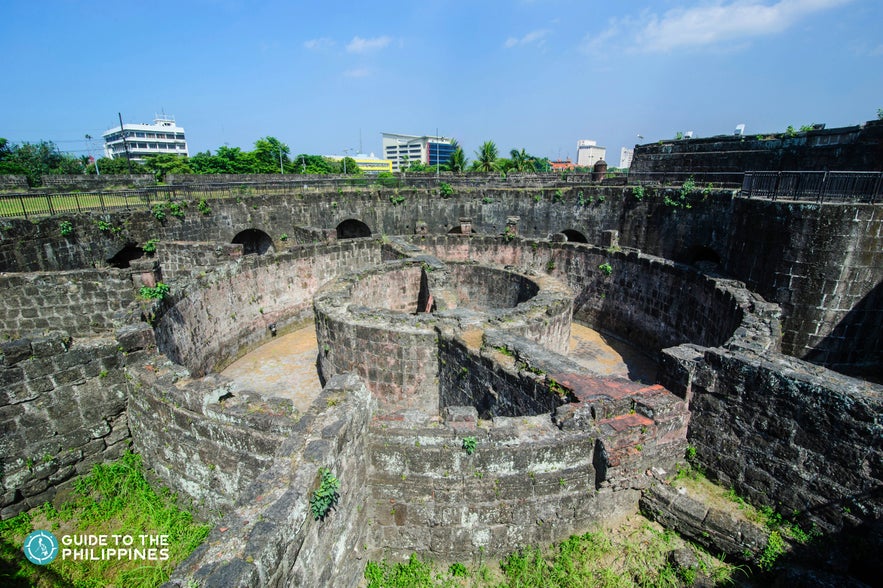 Most of them are only fragments of what they were used to be, but they are undoubtedly windows to the Philippines’ soul, pre-, during, and post-colonization.
Most of them are only fragments of what they were used to be, but they are undoubtedly windows to the Philippines’ soul, pre-, during, and post-colonization.
Aside from breathtaking beaches and awe-inspiring landscapes, here are some of the most notable historical places and important landmarks in the Philippines that are definitely a must-visit:
23. Sheik Karim al Makdum Mosque, Tawi-Tawi
Declared as a National Cultural Treasure, the Sheik Karim al Makdum Mosque in Simunul, Tawi-Tawi, is the oldest mosque in the Philippines.
Built in 1380 by Arab trader Sheik Makdum Karim, the mosque features pillars, made of Ipil hardwood, known to be some of the oldest Islamic artifacts in the entire country.
Islamic architecture and style is also popular for its intricate designs. A visit to this site gives you a glimpse of the colorful and rich Islamic culture that is prominent in the southern parts of the Philippines.
22. Leyte Landing Memorial Park
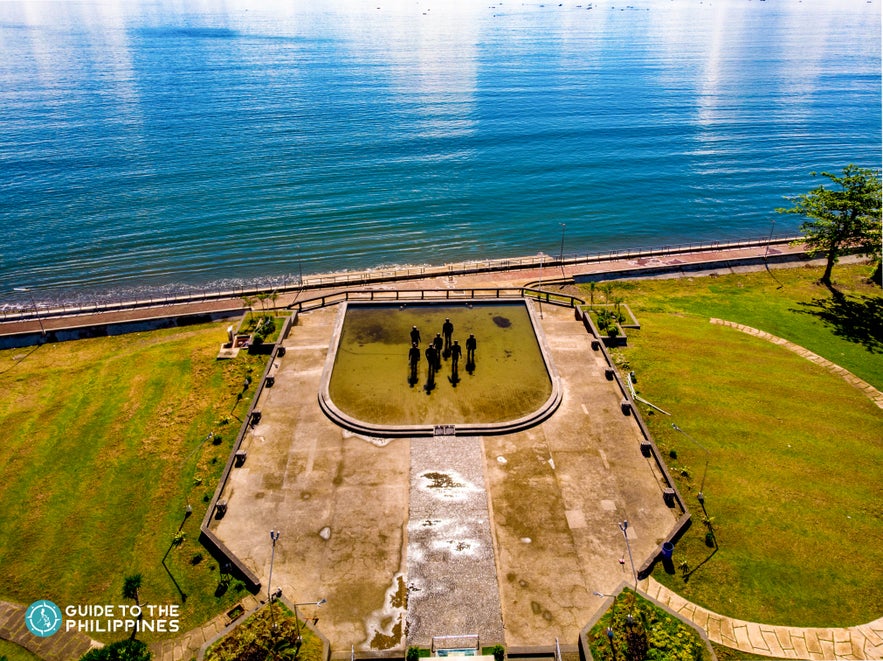
The Leyte Landing Memorial Park or also known as the MacArthur Landing Memorial Park in Palo, Leyte marks the site of General Douglas MacArthur’s return to the Philippines to fulfill his promise to the Filipinos in helping free the country from Japanese forces.
His now-immortal remark “I shall return.” was fulfilled on October 20, 1944, which commenced the largest naval battle of World War II. Bronze statues made by sculptor Anastacio Caedo were installed in this park to commemorate his historic landing and is one of the most important historical landmarks in the Philippines.
21. Sandugo Shrine, Bohol
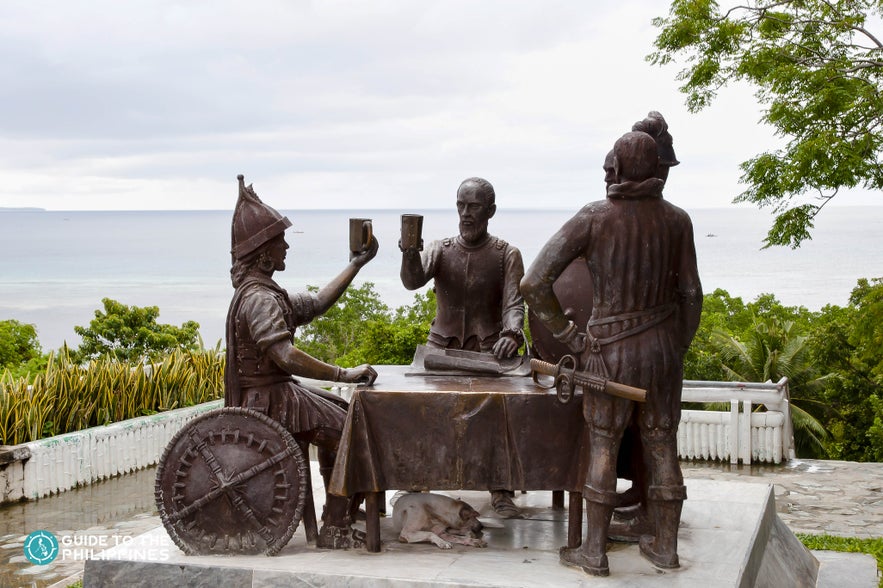 In 1565, Spanish explorer Miguel Lopez de Legazpi and Bohol chieftain Datu Sikatuna performed a blood compact, a tribal tradition that seals friendships. The historic moment marked the first treaty of friendship between Spaniards and Filipinos.
In 1565, Spanish explorer Miguel Lopez de Legazpi and Bohol chieftain Datu Sikatuna performed a blood compact, a tribal tradition that seals friendships. The historic moment marked the first treaty of friendship between Spaniards and Filipinos.
- Browse Bohol tours for your trip
A bronze sculpture by National Artist Napoleon Abueva marks Sandugo Shrine, frequented by many tourists who come to Bohol, an island full of natural wonders such as the Chocolate Hills, Panglao Beach, and the world’s smallest primate, the tarsier.
20. Jose Rizal Shrine, Dapitan
Down south of the Philippines is where you will find the Jose Rizal Memorial Protected Landscape, located in Dapitan, Zamboanga del Norte.
- Find the best tours and activities in Zamboanga
More commonly known as the Rizal Shrine, this area is where national hero Jose P. Rizal spent four years of exile when he was accused of planning the revolution against Spanish rule.
One of its most significant landmarks is the “Mi Retiro Rock” where Rizal spent time watching sunsets and where he penned one of his most beautiful poems w, Mi Retiro. Nearby the shrine is Dakak Park and Beach Resort.
19. Baler Church
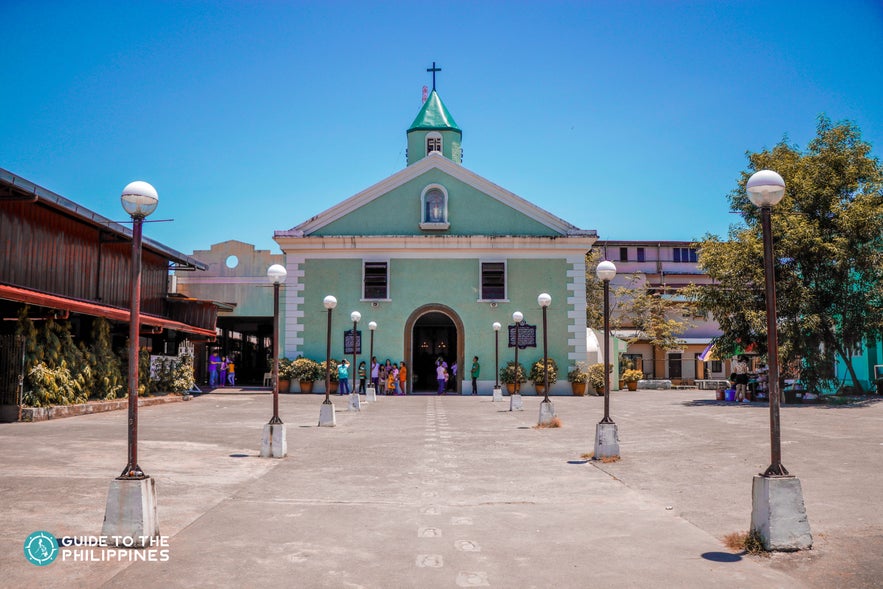 Frequented by many locals and tourists for its surf-perfect waves, Baler is also a town packed with a lot of history. The San Luis Obispo de Tolosa Parish, or more commonly known as Baler Church, was built in 1611 and is the site of the “Siege of Baler”, a battle during the Philippine Revolution.
Frequented by many locals and tourists for its surf-perfect waves, Baler is also a town packed with a lot of history. The San Luis Obispo de Tolosa Parish, or more commonly known as Baler Church, was built in 1611 and is the site of the “Siege of Baler”, a battle during the Philippine Revolution.
Even after the declaration of Philippine independence, the Spanish fortified the church as a military post until they finally surrendered in 1899. It is said that the church’s structure was made from stones plastered by lime and honey.
18. Plaza Cuartel, Puerto Princesa
 Aside from being the country’s Last Frontier, Palawan is also one of the best places to revisit significant historical landmarks in the Philippines. One of which is the Plaza Cuartel, which is often visited with other tourist spots in Puerto Princesa.
Aside from being the country’s Last Frontier, Palawan is also one of the best places to revisit significant historical landmarks in the Philippines. One of which is the Plaza Cuartel, which is often visited with other tourist spots in Puerto Princesa.
- Check out trips and experiences in Puerto Princesa
It previously served as a World War II garrison for Filipino and American soldiers. The landmark serves as a memorial for prisoners of war who were burned alive in an underground tunnel. It’s a tourist spot usually included in a day tour of Puerto Princesa.
17. Emilio Aguinaldo Shrine, Kawit, Cavite
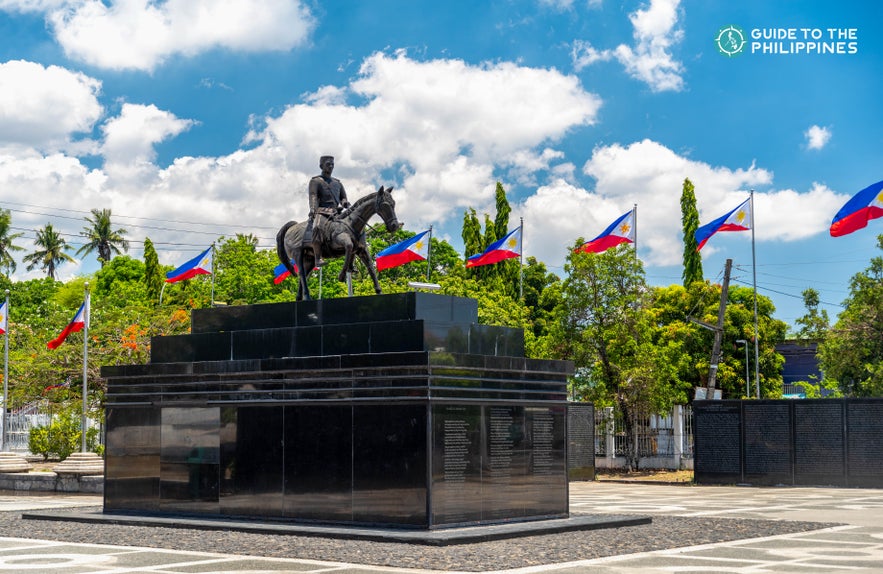 Originally the house where the first and youngest President of the Philippines lived, this mansion in Kawit, Cavite also become the site where the Philippine Independence from Spanish rule was declared in 1898.
Originally the house where the first and youngest President of the Philippines lived, this mansion in Kawit, Cavite also become the site where the Philippine Independence from Spanish rule was declared in 1898.
- Browse Cavite tours to explore this historical province
President Emilio Aguinaldo’s home is now a national shrine that also houses a museum filled with significant artifacts of the historic event.
Although the first Philippine flag was waved from one of its windows, a balcony was added in 1919. The house also features secret passageways and compartments, where important documents and weapons were once hidden. It’s a popular historic attraction included in a heritage tour in Cavite.
16. Mt. Samat, Bataan
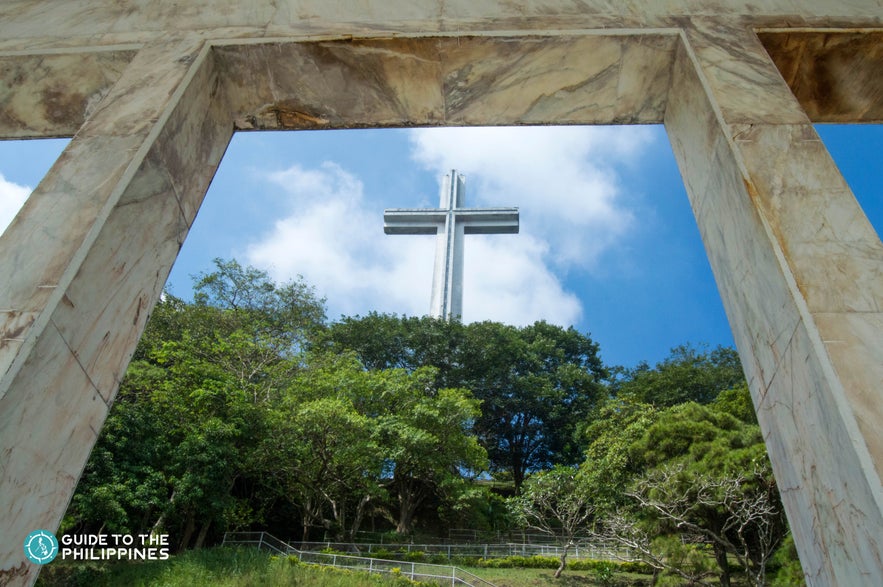 The Mount Samat National Shrine, also known as the Shrine of Valor, is a famous historical Philippine landmark in the town of Pilar in Bataan.
The Mount Samat National Shrine, also known as the Shrine of Valor, is a famous historical Philippine landmark in the town of Pilar in Bataan.
- Find the best Bataan tours to explore this province
This shrine was built to honor and commemorate all the Filipino and American soldiers who fought and died against Japanese forces during World War II.
The most prominent feature of the shrine is a large Memorial Cross, standing tall at 95 meters, finished with granolithic marble. This tourist spot is often combined with other heritage attractions in Bataan, such as Las Casas Filipinas de Acuzar.
15. Tabon Cave, Palawan
Dubbed as the Philippines’ Cradle of Civilization, the Tabon Caves in Palawan rose to fame when a skull cap, believed to be approximately 20,000 years old, was discovered in one of its sites.
Aside from the Tabon Man’s skull, several important artifacts such as stone tools, animal bones, and human fossils that date back to 47,000 years were also found in the caves.
A jar burial complex has also been found, with the Manunggul Jar featuring two figures on their journey to the after-life as the most famous find. Join a Tabon cave tour to explore this historical cave in Palawan.
14. Basilica del Santo Niño, Cebu
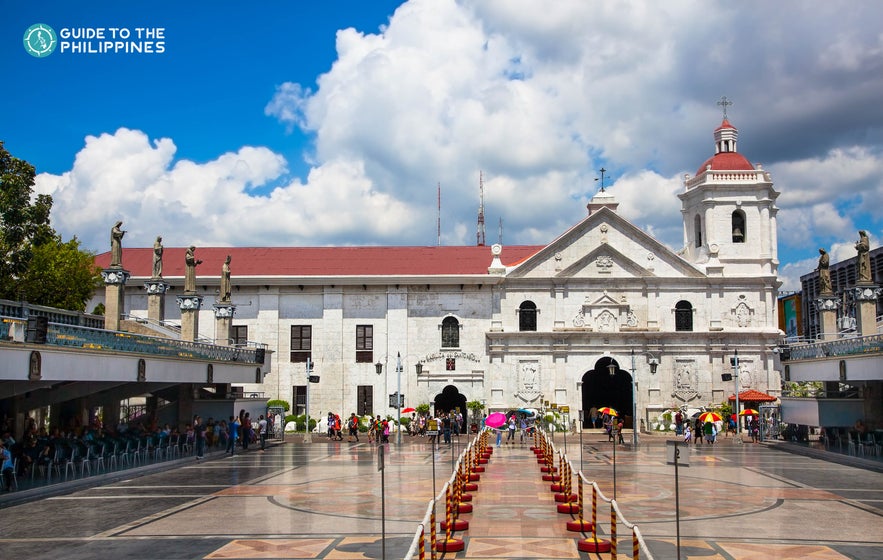 You cannot be in Cebu and not pay a visit to the country’s oldest Roman Catholic church, the Basilica del Santo Niño.
You cannot be in Cebu and not pay a visit to the country’s oldest Roman Catholic church, the Basilica del Santo Niño.
- Check out tours and activities to try in Cebu
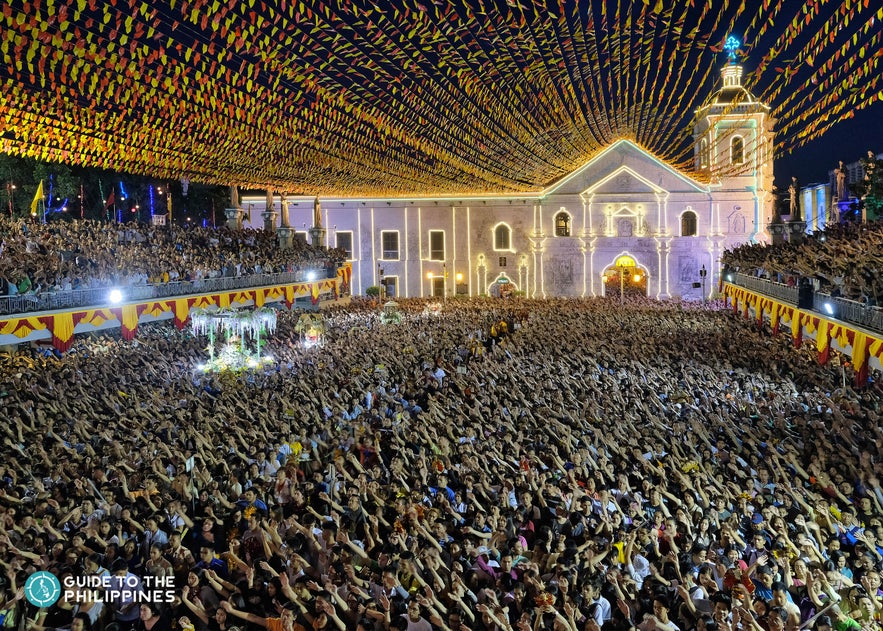 Thousands of devotees and tourists alike flock to this church every third Sunday of January, when the town celebrates the Sinulog Festival, in honor of the Child Jesus.
Thousands of devotees and tourists alike flock to this church every third Sunday of January, when the town celebrates the Sinulog Festival, in honor of the Child Jesus.
It houses a statue of the Child Jesus, the same one that Ferdinand Magellan gifted to then Queen Juana of Cebu. A visit to this magnificent historical and religious structure, surviving fires and a recent earthquake, is definitely one of the top things to do in the Philippines.
13. Mactan Shrine, Cebu
 Built in honor of Cebu Island’s first hero, Datu Lapu-Lapu, the Mactan Shrine history is one of the most significant moments in the Philippines’ past.
Built in honor of Cebu Island’s first hero, Datu Lapu-Lapu, the Mactan Shrine history is one of the most significant moments in the Philippines’ past.
This Philippine landmark was erected in what is known to be the site of the Battle of Mactan, when the native leader defeated explorer Ferdinand Magellan in 1521.
While it mainly features a 20-meter bronze statue of Lapu-Lapu, a shrine for Magellan was also built, honoring him for bringing Christianity to the Philippines.
12. EDSA Shrine, Quezon City
 Although commemorating a more recent event, the EDSA Shrine in Quezon City has already become one of the top historical sites in the Philippines.
Although commemorating a more recent event, the EDSA Shrine in Quezon City has already become one of the top historical sites in the Philippines.
Its original name is The Shrine of Mary, Queen of Peace, Our Lady of EDSA, but is more commonly known for its short name as it was built to remember the 1986 People Power Revolution that took place in the streets of Epifanio de los Santos Avenue or EDSA.
The revolution saw the ousting of then-President Ferdinand Marcos, who took the country under Martial Law. The most distinguishing feature of this landmark in Manila is a towering sculpture of the Virgin Mary atop the shrine’s church.
11. The Ruins, Talisay, Negros Occidental
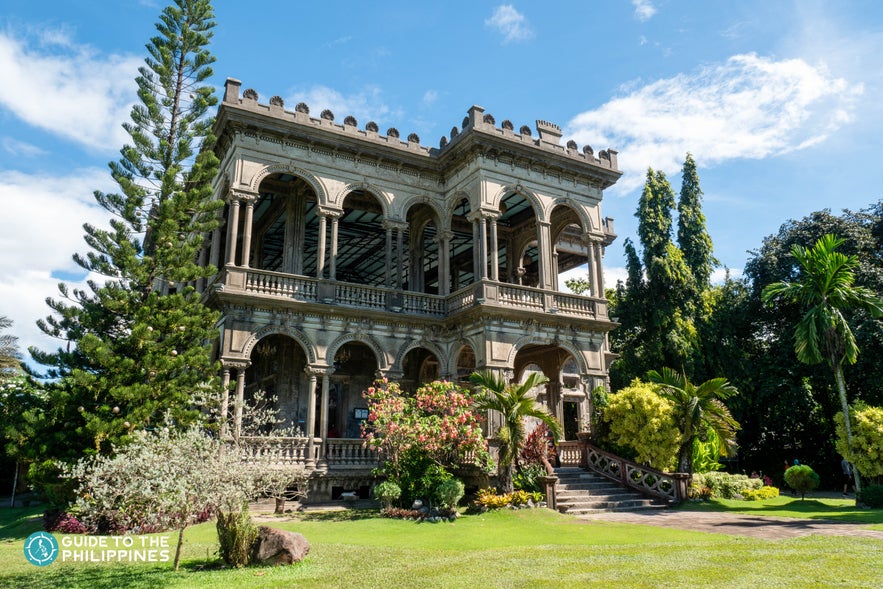 A testament of a husband’s love, The Ruins in Talisay, Negros Occidental was a mansion originally built by Don Mariano Lacson in honor of his late wife, Maria Braga.
A testament of a husband’s love, The Ruins in Talisay, Negros Occidental was a mansion originally built by Don Mariano Lacson in honor of his late wife, Maria Braga.
- Browse Bacolod tours that include The Ruins
Inspired by Italian architecture featuring Machuca-tiled floors and neoclassical pillars, the mansion was burned down by Filipino guerillas during World War II.
Its ruins remain a beautiful sight and has become a famous tourist spot included in a Bacolod sightseeing tour. Driving towards the landmark takes you through vast sugarcane plantations, which the province of Negros is known for.
10. Fort San Pedro, Cebu
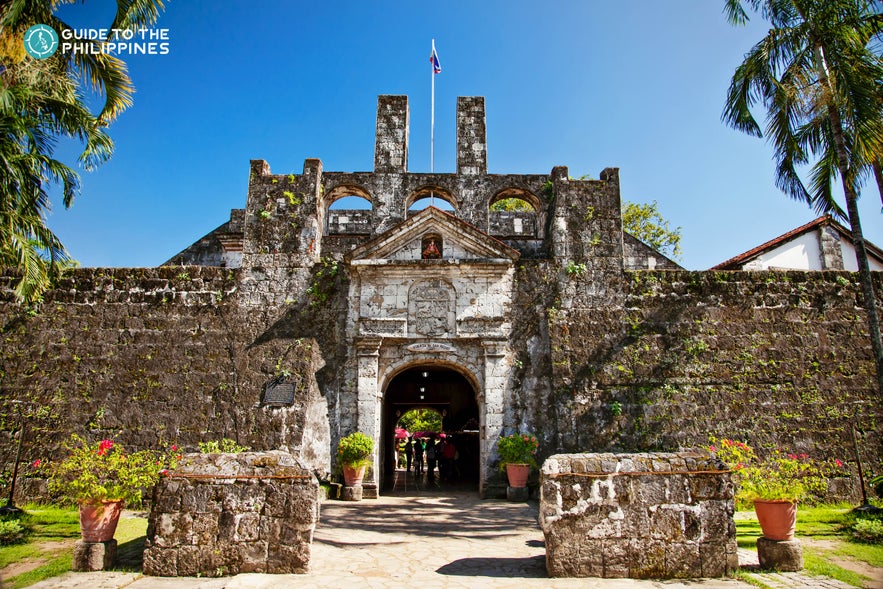 Built by the Spaniards under the command of Miguel Lopez de Legazpi in 1565, Fort San Pedro in Cebu City is the oldest fort in the Philippines. It is located near the port area of Cebu, in an area now called as Plaza Independencia.
Built by the Spaniards under the command of Miguel Lopez de Legazpi in 1565, Fort San Pedro in Cebu City is the oldest fort in the Philippines. It is located near the port area of Cebu, in an area now called as Plaza Independencia.
The fort houses a museum where you can find significant memorabilia, documents, and paintings highlighting the beginnings of Spanish rule in the Philippines.
As Cebu is becoming a highly urbanized metropolis, a trip to Fort San Pedro will make you realize that it’s a peaceful oasis in the city.
9. Binondo, Manila
 Eat your way through history as you visit what is renowned to be the oldest Chinatown in the world, Binondo. Even before it was established in 1954 as a Spanish settlement, Binondo was already the heart of Chinese commerce and trade in the country.
Eat your way through history as you visit what is renowned to be the oldest Chinatown in the world, Binondo. Even before it was established in 1954 as a Spanish settlement, Binondo was already the heart of Chinese commerce and trade in the country.
- Browse Binondo tours that you can join to explore the oldest Chinatown
Today, it is best enjoyed as a food tour destination in Manila, where you can sample signature fried chicken, fried siopao, noodle soups, and the most authentic dimsum you can ever find in the entire metro.
8. Tirad Pass, Ilocos Sur
What once was a bloodied war site has now become a favorite trail for adventure-seekers. The Tirad Pass in Mount Tirad, Ilocos Sur is of historic importance as it was the site of the 1899 Battle of Tirad Pass during the Philippine-American War.
- Check out tours in Ilocos for your trip
Epic mountain views and lush hills await those who hike up the trail, leading to the Shrine of Gregorio Del Pilar, in honor of the Filipino general who was killed during the battle.
7. Barasoain Church, Bulacan
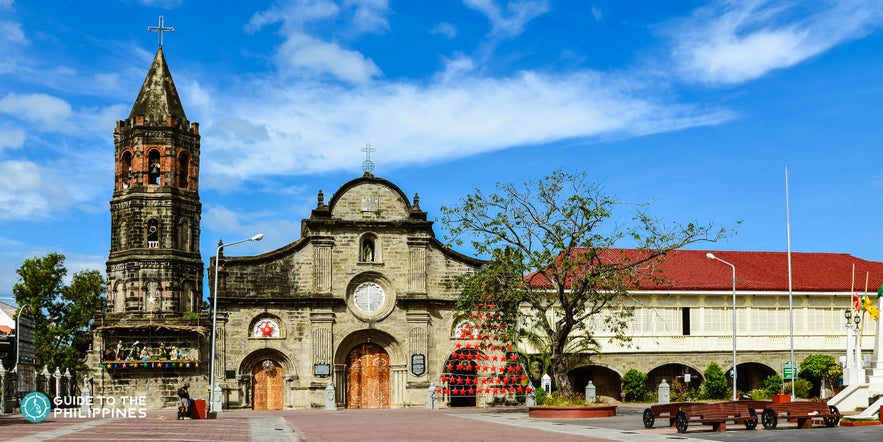 Regarded as the “Cradle of Democracy in the East”, the Barasoain Church in Malolos, Bulacan was the site of the First Philippine Republic when Gen. Emilio Aguinaldo was inaugurated as the first president of the country.
Regarded as the “Cradle of Democracy in the East”, the Barasoain Church in Malolos, Bulacan was the site of the First Philippine Republic when Gen. Emilio Aguinaldo was inaugurated as the first president of the country.
With its architecture reflecting Baroque and Neoclassical styles and features like rose windows, wood carvings, and painted domes, the Barasoain Church is not only a significant historic landmark but also one of the Philippines’ points of interest and structural beauty.
6. Malacañang Palace, Manila
Originally built in 1750 to house Spanish aristocrat, the Malacañang Palace has become the official residence and principal workplace of the president of the Philippines since 1935.
Open to the public is the Malacañang Museum, where you can visit the Presidential Museum and Library housing significant memorabilia and featuring awe-inspiring architecture.
A tour inside the palace complex also takes you to the San Miguel Parish Church, the only shrine in the entire world dedicated to the seven archangels. Tight security is to be expected in the entire area.
5. Fort Santiago, Manila
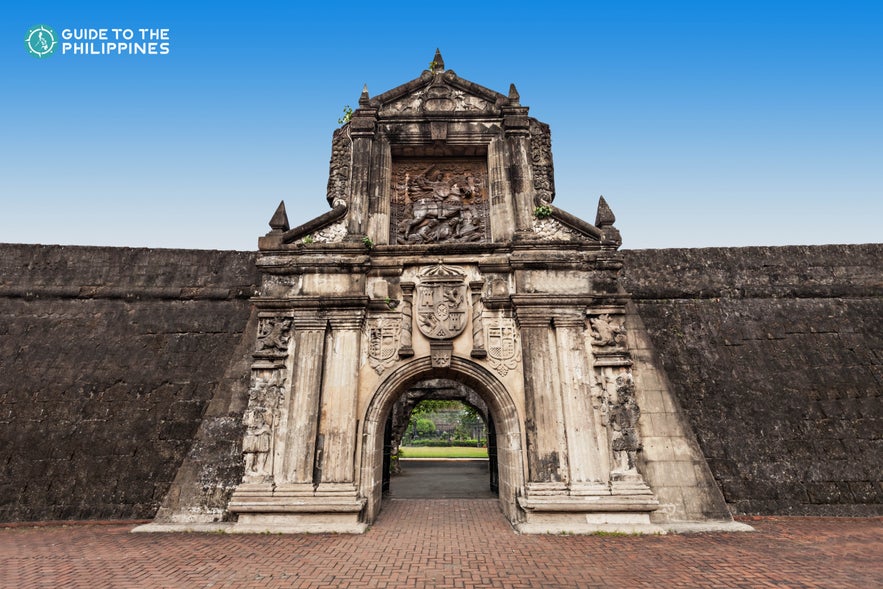 Inside the walled city of Intramuros in Manila lies Fort Santiago. It was formerly a citadel that served as headquarters for armies and foreign powers when the Spaniards were in control of the country.
Inside the walled city of Intramuros in Manila lies Fort Santiago. It was formerly a citadel that served as headquarters for armies and foreign powers when the Spaniards were in control of the country.
- Check out Fort Santiago tours in Manila
Ponds and fountains aside, it is most famously known for being the site of national hero’s Jose Rizal’s imprisonment shortly before he was executed in what is now known as the Rizal Monument in Rizal Park.
You can also find here the Baluarte de Santa Barbara, an 18th-century military barracks, if you’re planning to join tours in Intramuros.
4. Calle Crisologo, Vigan
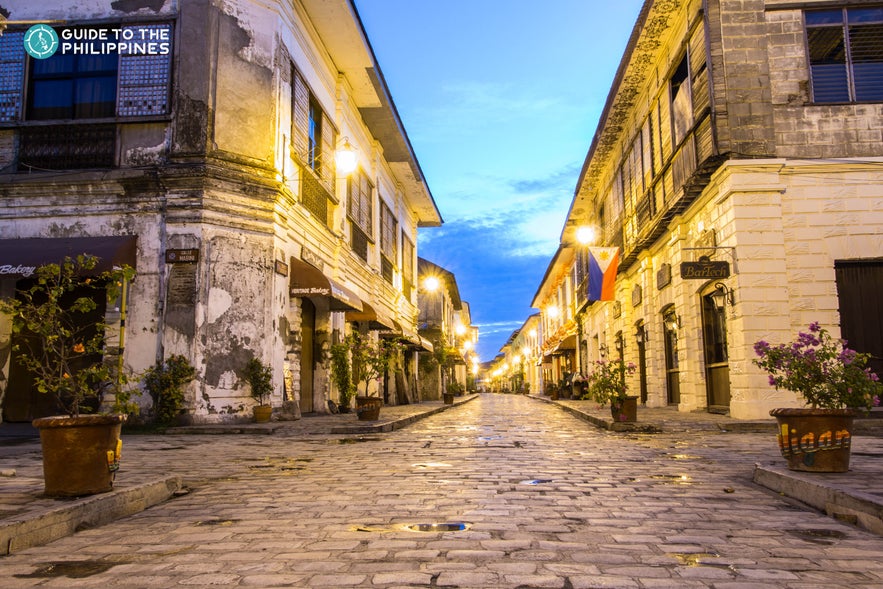 Awarded as a UNESCO World Heritage Site, the streets of Calle Crisologo in Vigan is regarded to be one of the perfect examples of a surviving Spanish colonial town in Asia.
Awarded as a UNESCO World Heritage Site, the streets of Calle Crisologo in Vigan is regarded to be one of the perfect examples of a surviving Spanish colonial town in Asia.
Travel back in time as you stroll through old-world charm, get mesmerized with Spanish colonial architecture, and enjoy delectable food such as the famous Ilocos Empanada.
While at it, buy a handicraft made of signature Abel Iloko weave in one of its many souvenir shops. So head up north, visit Vigan, and find some Calle Crisologo tours to try, as it’s one of the most beautiful attractions in the Philippines.
3. Corregidor Island
 Just a few hours away from Manila is Corregidor Island, regarded as one of the Philippines’ last military strongholds and a major landmark in the Philippines. During the American occupation, Corregidor was fortified with coastal artillery to defend the entrance of Manila Bay from enemy ships.
Just a few hours away from Manila is Corregidor Island, regarded as one of the Philippines’ last military strongholds and a major landmark in the Philippines. During the American occupation, Corregidor was fortified with coastal artillery to defend the entrance of Manila Bay from enemy ships.
A day tour in Corregidor consists of visits to sites such as the Battery Way, Battery Hearn, and the Pacific War Memorial which was built in honor of all the Filipino and American soldiers who fought during World War II.
2. Rizal Park, Manila
 Manila may greet you with skyscrapers, giant malls, and horrendous traffic, but set aside time to visit Rizal Park, one of the Philippines' iconic landmarks. This vast 60-hectare urban park, with manicured gardens and a dancing fountain, is truly one of the most historical places in Manila.
Manila may greet you with skyscrapers, giant malls, and horrendous traffic, but set aside time to visit Rizal Park, one of the Philippines' iconic landmarks. This vast 60-hectare urban park, with manicured gardens and a dancing fountain, is truly one of the most historical places in Manila.
More commonly known as Luneta Park, this is where you will find the Rizal Monument, the actual site marking the execution of the Philippines’ national hero, Dr. Jose P. Rizal.
Some meters away from the monument takes you to the network of grand museums in the National Museum of the Philippines that must not be skipped.
1. Intramuros, Manila
 A nostalgic stroll through the walled city of Intramuros cannot be missed when in the country’s capital, Manila.
A nostalgic stroll through the walled city of Intramuros cannot be missed when in the country’s capital, Manila.
- Find the best Intramuros tours during your trip to Manila
Whether you're exploring by foot or on a bamboo bike tour, a wonderful time is guaranteed in this 64-hectare Spanish fortress erected during the Spanish era and finally destructed by the end of World War II.
 Visit century-old churches like Manila Cathedral and San Agustin Church, the oldest church in the Philippines. Inside this historic landmark are famous universities, souvenir shops, and premier Filipino restaurants, which you can visit during your tour in Intramuros.
Visit century-old churches like Manila Cathedral and San Agustin Church, the oldest church in the Philippines. Inside this historic landmark are famous universities, souvenir shops, and premier Filipino restaurants, which you can visit during your tour in Intramuros.
 There is no shortage of beautiful places in the Philippines, and its many historical sites are among the sites you should not miss on exploring and appreciating. Check history tours in the Philippines for your vacation.
There is no shortage of beautiful places in the Philippines, and its many historical sites are among the sites you should not miss on exploring and appreciating. Check history tours in the Philippines for your vacation.